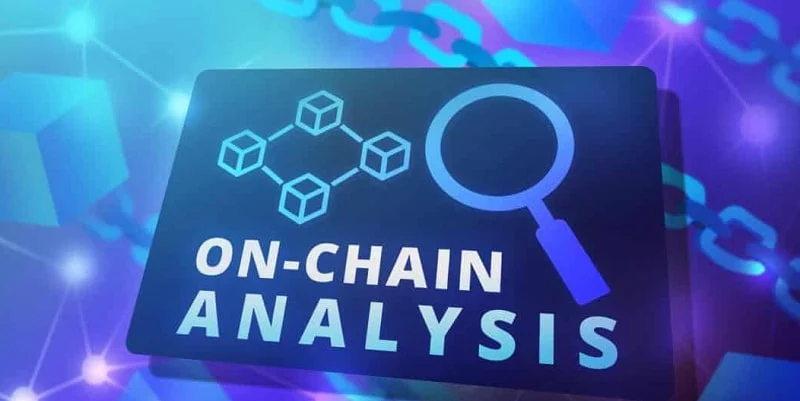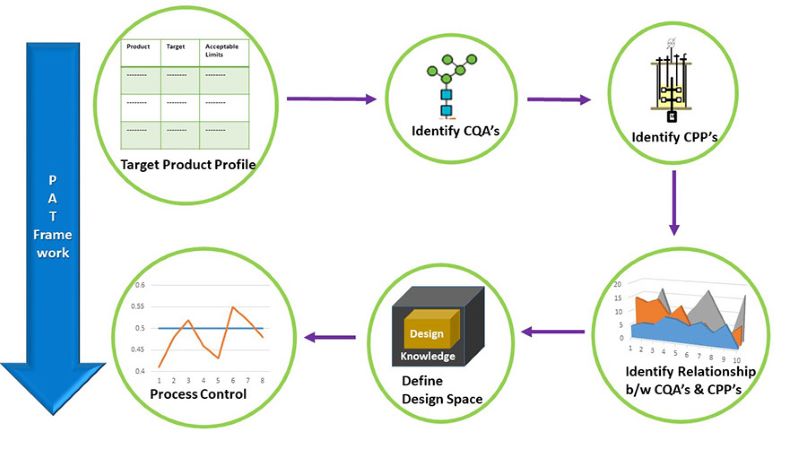Future of on-chain and collaborative code audits – this phrase is not just a bunch of tech buzzwords strung together; it’s the new frontier in cybersecurity. Imagine a world where the security of digital assets and smart contracts is not just in the hands of a few, but a global, collective force of vigilance. The stakes are sky-high, and the bad actors are smarter than ever, but so is our defense. It’s time to ditch the old ways and embrace a revolution that’s reshaping the cybersecurity landscape forever.
We’re diving head-on into how these audits are flipping the script, making sure our digital treasures are locked down tight. From the evolution that’s already unrolling before our eyes to cutting-edge tech that’s on the rise – I’ll walk you through how it’s changing the game. Buckle up, because it’s a wild, code-filled ride into a more secure future.
The Evolution and Importance of Smart Contract Auditing
The Shift Towards Decentralized Security Checks
Remember when we only trusted a few to keep our code safe? Times are changing. We’re now moving smart contract auditing into a new world. A world driven by the power of many. This is where decentralized security checks come in. They spread the net wide for more eyes to spot bugs in the system. Each person looking at the code adds a layer of security. It’s like having a team of detectives on the case.
Why do these decentralized checks matter? They stop bad actors before the show starts. A bad line of code can cost millions. We use blockchain code verification and peer-to-peer code review to catch problems. Collaborative smart contract audits bring together experts from all over. This helps to make sure that the code is not just good, but great. It also makes it harder for mistakes to slip by.
With more people checking, we can trust the system more. This builds a stronger, safer blockchain for everyone. It means you can sleep well, knowing your digital assets are secure. So, as we look to the future cybersecurity of blockchain, this teamwork is key.
Expanding the Breadth of Smart Contract Vulnerabilities and Solutions
No one likes bugs, especially in smart contracts. They can wreak havoc. That’s why we always look for new ways to find and fix them. Smart contract vulnerabilities come in many shapes. Some are sneaky and hard to spot. Others, like simple errors, stand out more once you know what you’re looking for.
We used to worry about a few common bugs. Now we know there’s a whole world of them out there. We’re learning more every day about these weak spots. As we do, we’re finding new solutions too. We have collaborative audit tools that let us work together better. On-chain security protocol trends lead the way, helping us improve how we audit code in DeFi and beyond.

Smart contract auditing isn’t just about finding current problems. It’s about being ready for the ones around the corner. We build distributed ledger technology safeguards to protect against future threats. The aim is to make blockchain resilient. That way it can face whatever comes next head-on and keep on running smoothly.
By using a mix of human smarts and code auditing automation, we are setting high blockchain audit standards. These standards help us all know what good, secure code looks like. They also show us how to meet them every time we write or check a line of code.
In the end, we’re aiming for a world where crypto code assurance is a given. A world where everyone can trust blockchain tech, just like they trust locking their front door. This isn’t just my goal as a Blockchain Security Analyst, it’s our goal as a digital community. Together, we’re pushing for a future where our virtual valuables are as safe as the ones we can touch and see.
Emerging Technologies in On-Chain Security Protocols
Enhancements in Code Auditing Automation
As a blockchain security analyst, I see code automation as key. It makes finding bugs in smart contracts much faster. This matters because smart contracts handle valuable crypto assets. They must be safe and reliable. To do this, smart contracts go through blockchain code verification. It’s like a security check for code.
Now, let’s talk about code auditing automation. This tech helps us check smart contracts for mistakes without human errors. We use computer programs that scan the code. They look for known smart contract bugs. This means we can find and fix problems fast.
But automation doesn’t replace expert eyes. We use both because no program is perfect. Automated tools might miss something a trained person would spot. So, we do collaborative smart contract audits too. Here, experts from around the world help each other out. They look over the code together.
Implementing Real-time Code Monitoring for Proactive Defense
Now on to real-time code monitoring. This is like a security camera for smart contracts. Imagine you have an alarm system at home. It warns you if a window breaks or a door opens. Real-time monitoring does that for smart contract code. It keeps an eye out all the time.
If someone tries to attack or if something goes wrong, it tells us right away. This is great because it means we can stop thieves before they take anything. It’s also good for making sure things work right. If a contract suddenly acts weird, we find out quick. Then we fix it.

Both of these technologies—code auditing automation and real-time code monitoring—are part of what we call on-chain security protocol trends. These are new ways we’re making blockchain safer. For the future cybersecurity blockchain, these trends are big deals. They help protect your money in DeFi—that’s short for decentralized finance. It’s where you can lend, borrow, and earn interest with crypto.
As we look ahead, the tools we use will get even smarter. We’ll have even more help from the community with peer-to-peer code review. We’ll set higher blockchain audit standards, and we’ll keep making everything we do as clear as glass with audit transparency on blockchain.
And remember, security is a team effort. It’s not just one person’s job. We all work together, sharing tools and ideas. That’s how we’ll make blockchain the safest place to keep your digital treasures—now and in the future.
Enhancing Transparency and Trust through Collaborative Audits
The Role of Decentralized Audit Networks in Cybersecurity
Decentralized audit networks are changing the game in cybersecurity. They let us work together to spot smart contract bugs before they harm. Here, we don’t just rely on one person’s skills. Instead, many experts from all over can peek at the code. They pick apart every line to find weak spots. It’s like a team of detectives hunting for clues.
In simple terms, think of a group where everyone helps each other. That’s how these networks operate. They boost security and cut down on the bad stuff that can happen. This way of working together shows us how open and connected our digital world has become. It also proves the power of peer review.
Audits are not just about one pair of eyes. They are about the power of many. This brings us closer to coding without errors. It also builds trust. When you know many eyes have checked the code, you can trust the tech more.
Adopting Immutable Audit Trails for Verifiable Security
Now let’s talk about something we call immutable audit trails. This tech makes sure every check on the code leaves a mark. This cannot be changed or removed. Imagine writing in pen on a piece of metal. That’s how firm it is. This kind of record-keeping is a big step up in security. It helps us see what changes got made and who made them.
Isn’t that cool? You can know everything that ever happened to that code. This helps everyone feel more sure about what they are using. In the past, it was hard to know who did what. Now we can track everything. This makes it easier to spot and stop bad moves fast.
And think about it. With a record like this, even if something goes wrong, we can fix it quickly. This is what we call verifiable security, where you can prove that the system is safe.
So, we’re all about making audits better. We use everyone’s knowledge to make sure what you use is solid. We also make it so you can trust the tech. It’s like building a safer digital world with more hands on deck. And when we do it right, it feels good, like we’re all in it together, fighting the good fight.
Governance and Standards: Shaping the Future of Blockchain Security
Constructing Robust Audit Governance Models
Picture a world where every blockchain move you make is safe. Sounds good, right? Well, audit governance models are here to do just that. They’re like the traffic rules for blockchain, ensuring everyone drives safe and sound.
These models help create rules. These rules guide experts as they check the blockchain’s safety. They peek at the code and look for bugs that could cause trouble. They’re like detectives, finding clues and solving cyber puzzles.

Now, why should you care? Simple. Better rules mean fewer mishaps. When experts have a clear guide, they can spot problems fast. They can fix errors before they become big, costly mistakes. This is important for anyone using blockchain today, or plans to in the future.
Next up, we face smart contract bugs. Think of smart contracts like digital agreements that run themselves. But, when they have bugs, things can go south fast. Good governance models make finding these bugs easier.
The Integration of Blockchain Audit Certifications and Compliance Standards
But wait, there’s more. We’re not just making up rules as we go. We have standards and certifications to back us up. It’s like having a driver’s license, but for auditing blockchain code.
When an expert is certified, you know they’ve met high standards. They’ve proven they can handle the job and do it well. This gives you peace of mind your crypto is in good hands.
These certifications come with checklists. They’re like a grocery list but for blockchain safety. They tell auditors exactly what to look for. This way, they don’t miss anything important.
Compliance standards are the cherry on top. They’re the big-picture rules that everyone on the blockchain follows. They’re not just for auditors; they’re for everyone making or using crypto tech.
By following these rules and standards, we build trust. We show the world that blockchain is a safe place to play and work. It’s like building a strong, safe playground where everyone’s welcome.
With these in place, we can trust blockchain technology more. We’re creating a future where our virtual coins are as safe as the money in our pockets. It’s a future filled with promise and certainty – a digital playground where everyone’s invited. And that’s a future we all want to be part of.
We’ve looked at how important smart contract audits are. They find issues in contracts so they can’t be hacked. Tech is getting better, making these checks faster and more automatic. Putting them in early means we spot trouble before it starts. People working together on audits is key too. It makes things extra clear and builds trust. And with solid rules and standards, blockchain is more secure for everyone. Remember, good security means a stronger, safer blockchain for us all. Keep these points in mind, and let’s push for a future where every smart contract gets the thorough check it needs to protect users and their assets.
Q&A :
What is the significance of on-chain code audits for the future of blockchain security?
On-chain code audits are becoming increasingly crucial for blockchain security. By utilizing blockchain technology itself to host and execute code audits, there is a transparent and immutable ledger of all audit actions and findings. This trend towards on-chain code audits suggests a future where security practices are as decentralized and transparent as the technology they protect, leading to greater trust and robustness within the blockchain ecosystem.
How will collaborative code audits shape the development of blockchain technology?
The development of blockchain technology stands to benefit greatly from collaborative code audits. By engaging a community of developers to collectively scrutinize code, a wider array of vulnerabilities can be identified and resolved. This communal approach not only improves code quality but also fosters a stronger, security-oriented community ethos, which is vital for the future evolution of blockchain platforms.
Can on-chain and collaborative code audits improve smart contract reliability?
Yes, on-chain and collaborative code audits can significantly enhance smart contract reliability. Through on-chain audits, smart contract code is verified in a transparent manner on the blockchain itself, providing an indelible record of the audit trail. Collaborative efforts mean that a diverse set of eyes reviews the smart contracts, leading to the detection and rectification of a broader scope of potential issues before they can be exploited.
What are the potential drawbacks of on-chain code audits in the future?
While on-chain code audits offer transparency and security, there are potential drawbacks. These may include the need for additional resources to perform on-chain operations, possible scalability issues due to the added activities on the blockchain, and the risk of publicizing sensitive security information if not managed correctly. Adapting audit practices to mitigate these drawbacks is an important step for the future of blockchain technology.
How do collaborative code audits impact the speed of blockchain development and deployment?
Collaborative code audits can have both positive and negative impacts on the speed of blockchain development and deployment. On one hand, having more participants in the audit process can slow down the speed of review if not managed properly. On the other hand, the pooling of diverse expertise and insights can lead to quicker identification and resolution of issues, streamlining the development process and reducing delays due to post-deployment fixes. Proper coordination and tooling are essential for maximizing the benefits while minimizing potential slowdowns in the collaborative audit process.

RELATED POSTS
What can you get with leetcoins? Discover now!
What can you get with...
Kraken Launched Layer 2 Ink with $25 Million Support from Optimism
In a landmark move within...
What is Dapp? The future of U2U decentralized applications
Are you ready to explore...
Naoris Protocol Airdrop: Get free NAORIS Tokens
Naoris Protocol is an advanced...
NebulaStride Airdrop – Tips to Maximize Income
To maximize your income from...
What is ACA Coin? Learn about Acala Network Token
ACA Coin is a vital...
What is rate limit exceeded on twitter?
What is rate limit exceeded...
What are distributed systems? Bridging the Gap Between Efficiency and Complexity
In today’s digital age, the...
Examples of Secure Blockchain Implementations: Unveiling Industry Innovations
Examples of secure blockchain implementations...
What is Metamask wallet and the secrets behind it
What is Metamask wallet and...
Arch Network Airdrop: Detailed guide on how to participate
Arch Network is an innovative...
The Future of Decentralized Finance: Key Trends for 2025
The decentralized finance (DeFi) landscape...
Robotics vs AI vs Machine learning – The Future of Technology
Robotics vs AI vs Machine...
How does DALLE work? A Comprehensive guide to AI Art generation
How does DALLE work? This...
Solana Sonic Game Coin: Revolutionizing Blockchain Gaming in 2024
The gaming industry is undergoing...
Yala Airdrop – A Great Opportunity to Earn Free Tokens Today
Discover Yala Airdrop now –...